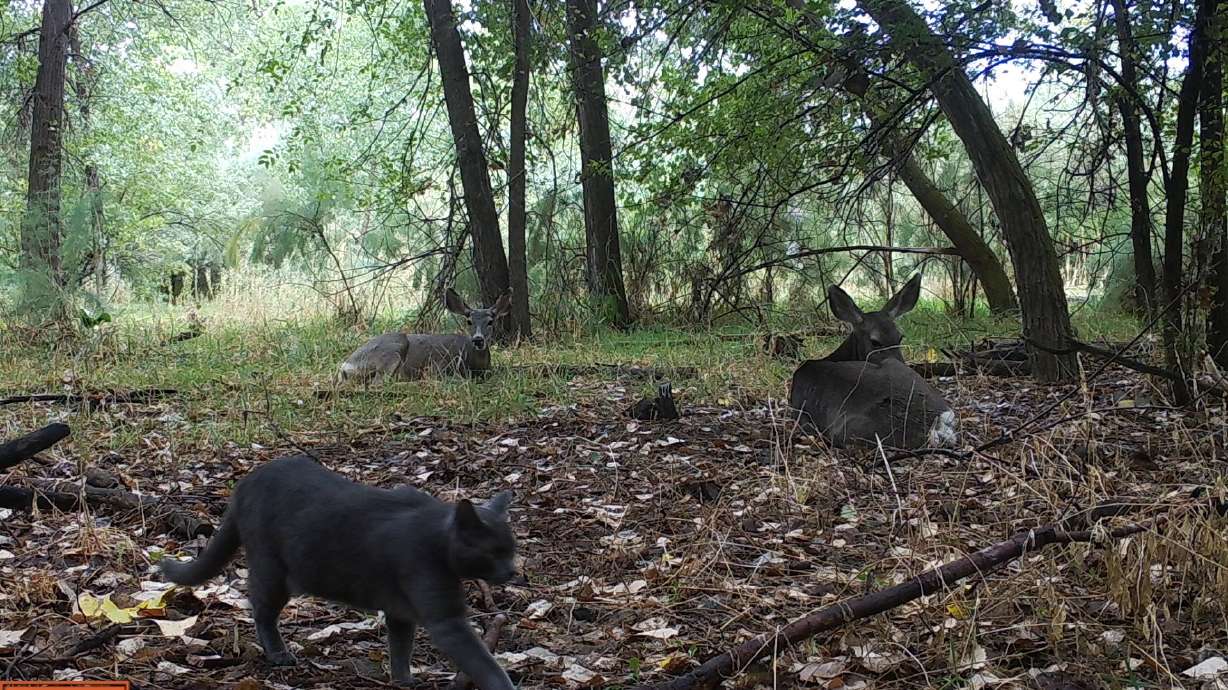Estimated read time: 3-4 minutes
This archived news story is available only for your personal, non-commercial use. Information in the story may be outdated or superseded by additional information. Reading or replaying the story in its archived form does not constitute a republication of the story.
SALT LAKE CITY — North American cities, including the Salt Lake City area, are getting warmer, and researchers warn the heat is making it more difficult for native wildlife to adjust to the growing urbanization near their homes.
A new report published last week also says the effects of the heat are worse in cities in drier regions, such as the Wasatch Front, and for "larger-bodied" mammal species.
"Those cities that don't have as much rainfall, have higher average temperatures — the effects that they had on wildlife were greater than in cooler and wetter cities," said Austin Green, a postdoctoral researcher at the University of Utah's College of Science and one of the study's dozens of co-authors, in a news release.
The findings, published in the journal Nature Ecology and Evolution, are based on an analysis of 725 wildlife camera sites across 20 North American cities during the summer of 2019, including 55 sites either in Salt Lake City or close to it. Green said these were primarily city parks or protected areas in various places along the Wasatch Front, such as the Salt Lake City Cemetery and the Jordan River Parkway.
Dozens of researchers from the U.S. and Canada identified 37 native land mammal species from more than 20,000 camera-trap-days worth of data. These range in size from bears and cougars all the way down to rabbits and squirrels.
They found what they suspected, which is that urbanization led to "stronger negative influences" on mammal communities in a specific area, the study notes. Warmer and drier cities had less diverse wildlife than cities with cooler temperatures or more vegetation.
This is likely because wetter cities have more vegetation that offers "greater access to limited resources such as food, water and refugia from predators" than less-vegetated cities, researchers wrote in the study.
It also found biodiversity continued to drop in the most urbanized parts of cities. Green said this is likely because of the urban heat island effect in strongly urbanized areas. The Environmental Protection Agency notes this is when buildings, roads and other infrastructure "absorb and re-emit the sun's heat more than natural landscapes such as forests and water bodies."
"That kind of insinuates that if the climate is going to continue to get warmer, and rain events are going to continue to become more dispersed across time, then wildlife are going to have a harder and harder time adapting to urbanization," he said, adding urban wild animals tend to come out at night so they can avoid human interaction and also enjoy "temperature refugia."
But Cagan Sekercioglu, a professor at the U.'s School Of Biological Sciences and another co-author of the study, said wildlife may not be "able to get the resources they need" if nighttime temperatures continue to increase.
The data could help cities find ways to protect wildlife diversity as they plan for future growth, Green said. That's what he hopes is the primary takeaway from the study.
"We should be cognizant about the way we design cities or the way that we restore natural areas to cities," he said.









